The problem was that the fiberglass hatch would wear out the top of the guides.
The fix for later models was to insert a plastic channel in the grooves.
My 1977 CD 27 did not have the fix, however, so the tops of the companionway slide grooves were worn out like this:
(In most of these photos, the seahood has been removed)
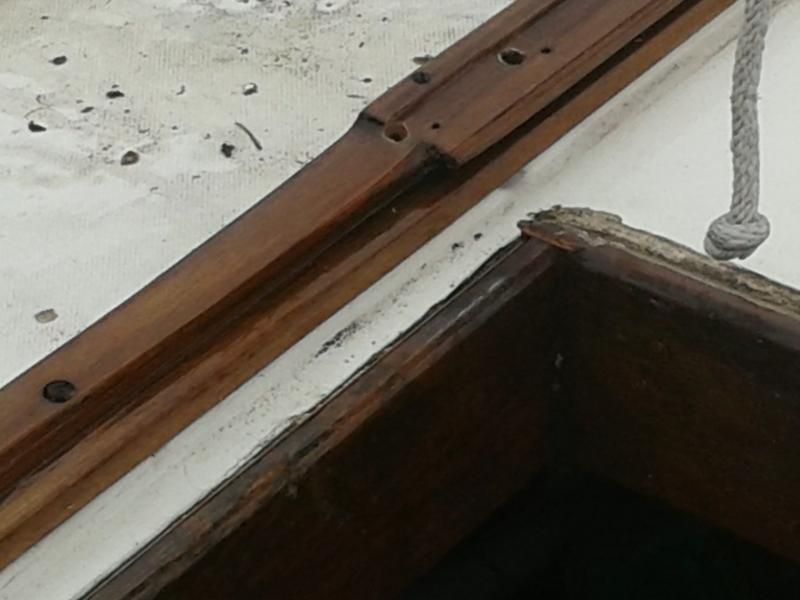
You can see how the groove is still ok to the upper right (forward, usually covered by the seahood)), but worn away to the lower left (aft).
In other words, the forward portion was fine, but the aft portion was gone.
Unfortunately, this failure was on a nice, highly visible piece of the brightwork.
It wasn't a functional problem (the slide worked fine), but it was unsightly.
It caused me and a few guests to remark that "it was a real shame it had worn out like that".
So I decided to try reversing the pieces "end for end, and side to side".
I removed the seahood, and the guides:
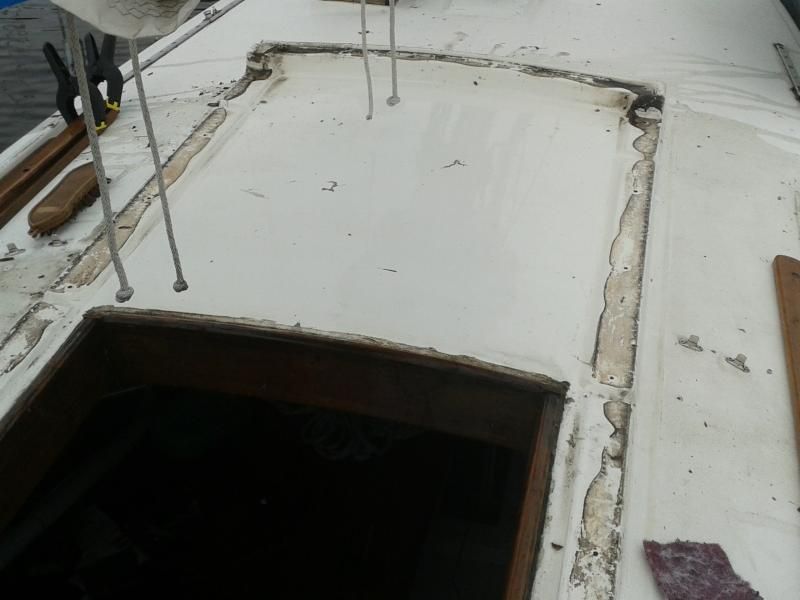
Before (note worn section aft and good section forward):
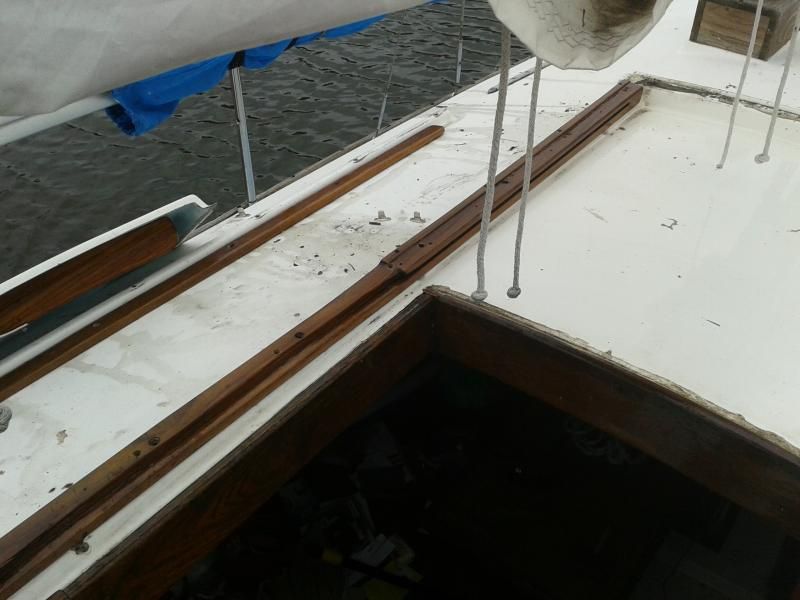
And after swapping "end for end and side to side":
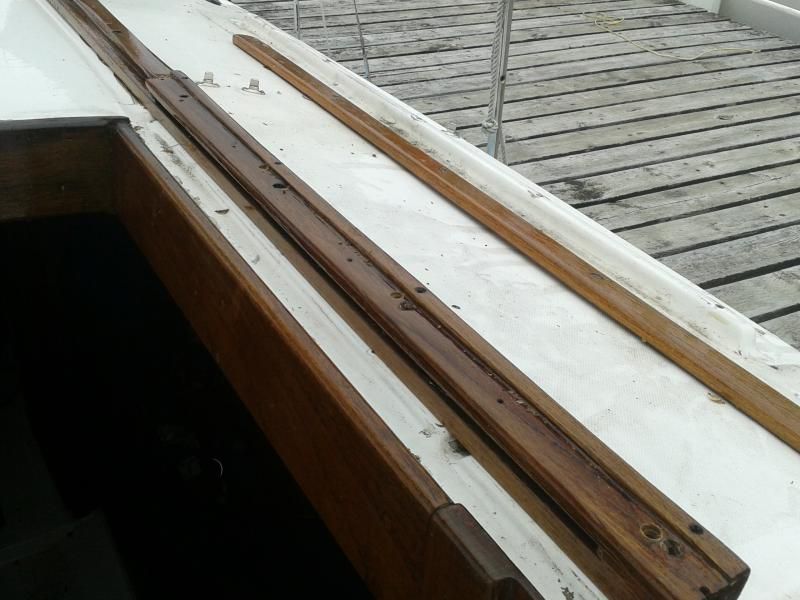
So, the idea is to "flip" the pieces.
The screw holes don't line up when you do this, so I drilled new ones, using the pieces as templates for each other.
(I put the two pieces together (reversed end for end) to drill the new holes).
Then I put bungs in the old holes, to protect the varnish..
Here's the result (before re-attaching the seahood)}
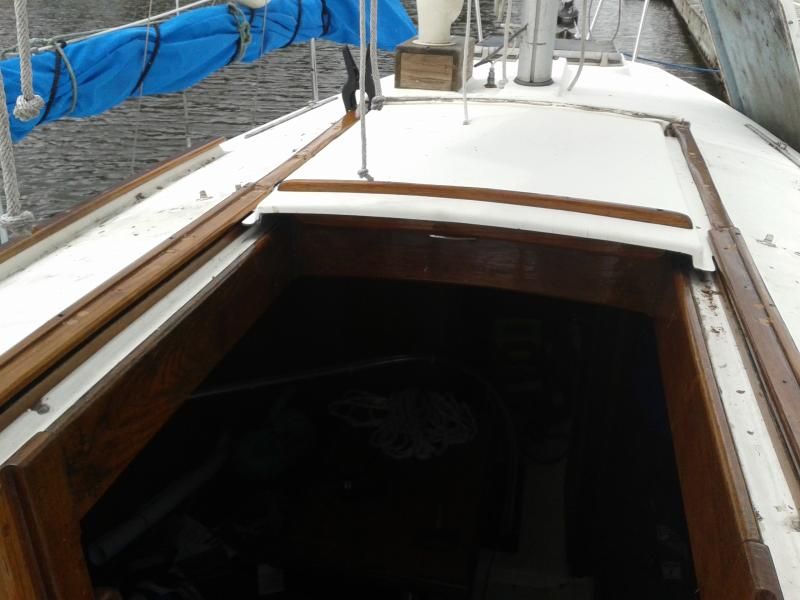
And after:
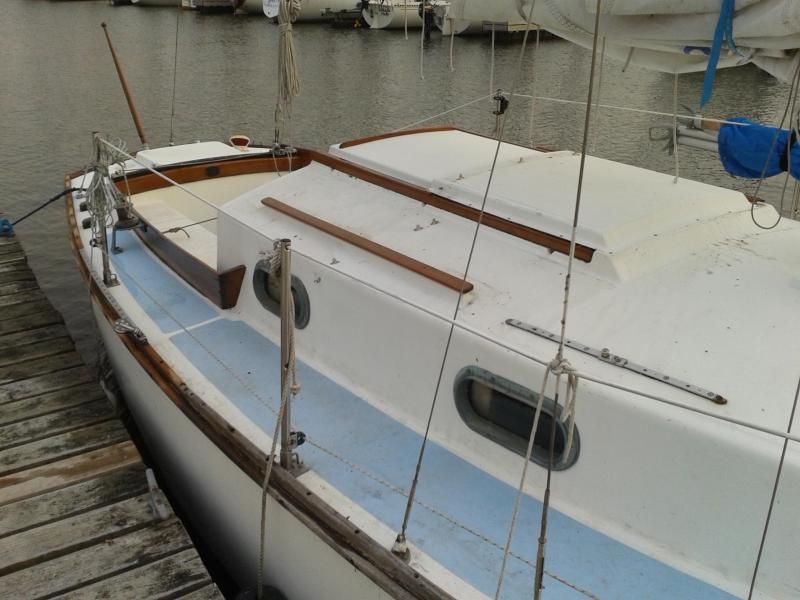
In case you are thinking of doing the same thing:
1) This is not a permanent solution:the groove will eventually wear out for the same reason, unless you protect the teak with a u-channel or something equivalent)
2) Nothing on a Cape Dory is symmetrical, so the pieces are not an exact match when you swap them (mine are now binding on the hatch, because they are tighter together than before they were when swapped)
3) It's nice not to have to see a worn-out piece of teak every time you open or close the companionway hatch!
